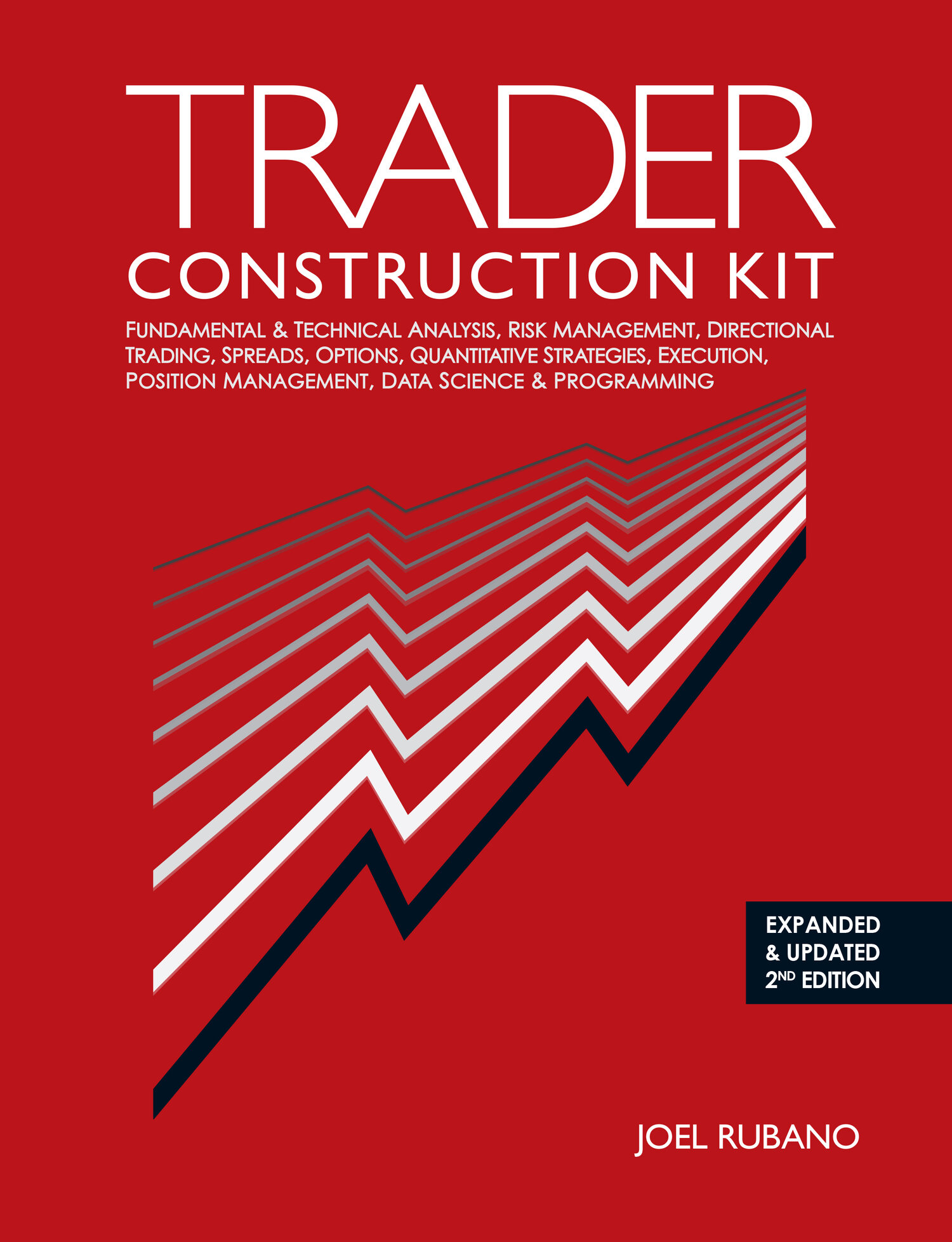The first installment of the Best Books for Beginning Traders discussed five works that described what it means to be a participant in both early-stage and developed markets: Liar’s Poker, Bombardiers, Metal Men, When Genius Failed, and Rogue Trader. We now move on to practical texts that build on the foundations of option theory, technical analysis, and risk management initially covered in Trader Construction Kit:
6. Options, Futures, and Other Derivatives by John C. Hull
It is difficult to overstate the importance of Hull’s Options, Futures and Other Derivatives, which is ironic, considering that it is generally referred to as “the bible” of the financial markets. Recently updated in a 9th edition, it is a big, imposing book that has evolved and expanded its scope considerably with each successive iteration. Option trading has a large and extremely complex body of theory, and can be an extremely daunting subject for the uninitiated. Trader Construction Kit presents an introduction to the basics of the options market, standard valuation models, Greek risk measurements, and provides a dynamic hedging example…and even that relatively condensed coverage necessitated by far the largest and most complicated chapter of the book. Hull’s text provides the most complete coverage of the topic available, and offers a clear, comprehensive treatment of the mathematics underlying derivative pricing models and the resulting risk metrics. It should be considered mandatory reading for prospective practitioners, particularly those interested in option-centric careers in derivative trading, transaction structuring, and complex deal origination. This is doubly true for a trader contemplating a customer-facing role at a bank, merchant, or asset management firm, where it is almost impossible to price and hedge deal flow without a solid understanding of option fundamentals.
7. Technical Analysis of the Financial Markets: A Comprehensive Guide to Trading Methods and Applications by John J. Murphy
Technical analysis is the study of chart patterns as a window into market sentiment and trader psychology, and is an extremely polarizing concept in the industry. Some practitioners flatly refuse to acknowledge its predictive utility, while others exclusively employ pattern-based analysis of the market to generate trading strategies. I make the argument in Trader Construction Kit that a hybrid approach incorporating both fundamental and technical information sources is maximally effective, employing technical analysis to refine the trader’s view and provide perspective on the potential magnitude and direction of price responses to the evolution of the fundamental landscape. Technical analysis also has an extremely large body of theory, ranging from simple graphical tools to exotic, complex interpretation systems. I believe that the basic trend and pattern analysis techniques can be applied to any liquid product, regardless of market, and therefore have the most predictive utility. Murphy’s Technical Analysis is the benchmark resource for understanding the core concepts of trend, support, resistance, and pattern analysis. The main value in Murphy’s text resides in chapters 4 through 6, where he discusses the basic patterns common to all markets and gives clear, concise explanations of why they occur, their significance, and the implications for future price movements. Murphy’s book is also worthwhile for those who do not ever intend to employ technical analysis, but who will most certainly share the market with traders that are.
8. Dynamic Hedging: Managing Vanilla and Exotic Options by Nassim Nicholas Taleb
Back in the dark ages, risk management was an obscure mathematical discipline exclusively practiced by bespectacled corporate drones and the sorts of people who excelled at competitively reciting the digits of Pi. Traders did not practice risk management, they practiced risk taking. They also generally worked in a pit, settled disputes with their fists, and had very little use for more than two decimal places. This all changed in 1997, with the publication of Nassim Taleb’s groundbreaking text, Dynamic Hedging. Dynamic Hedging offered the first glimpse of Taleb’s pragmatic approach to trading risk management, in which market-facing practitioners must understand the limitations and idiosyncratic nuances of the tools and techniques they deploy, lest they be destroyed by ignorance or misplaced confidence. Be warned, Taleb asks a lot of his reader, presenting high-level information at great velocity, frequently with little preamble. Prospective readers should consider a warm-up lap through Hull’s Options, Futures and Other Derivatives to refresh their understanding of the basics of option theory and derivative math before attempting Dynamic Hedging.
In the final installment we will investigate five books that serve as an extended series of case studies, from which a novice can gain perspective on how traders interact with their markets.
Please use the Contact form to forward any comments or suggestions for future posts. The author can also be reached at:
info@traderconstructionkit.com
